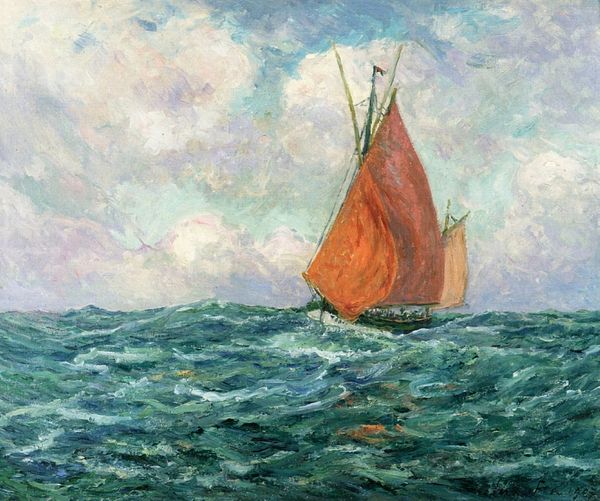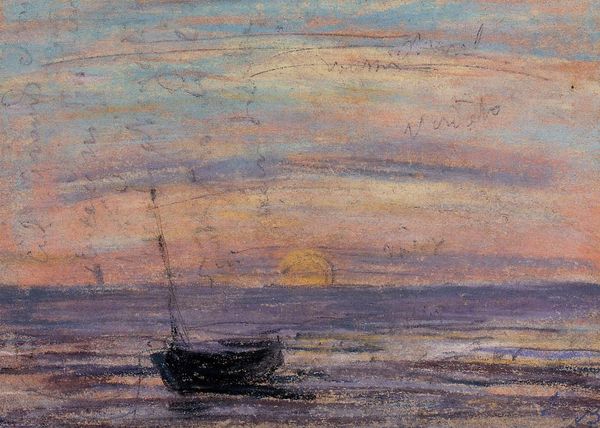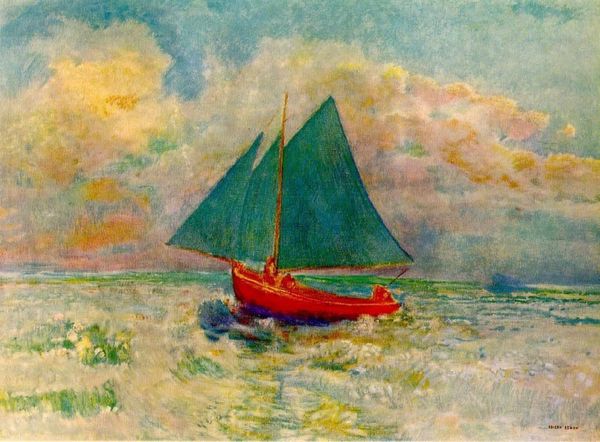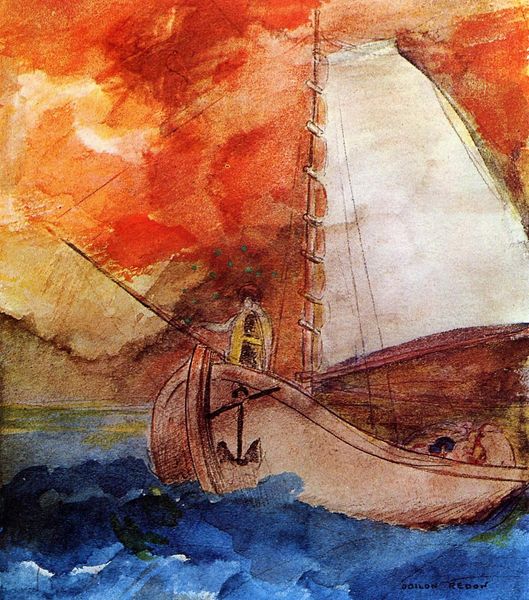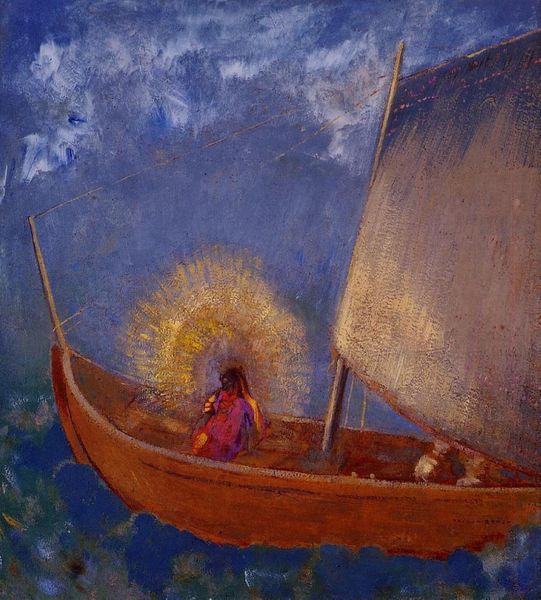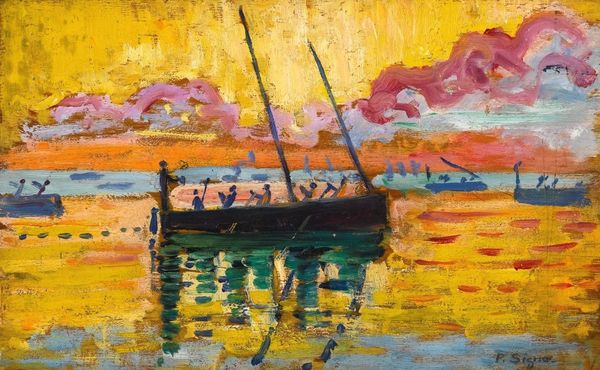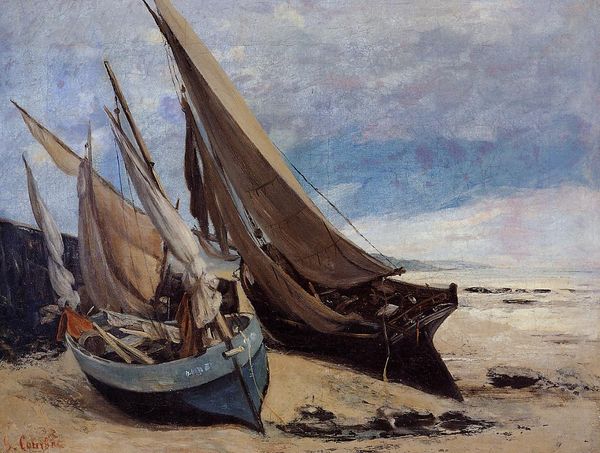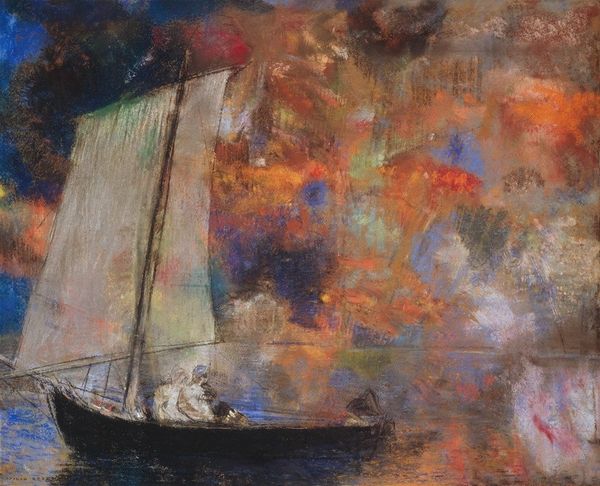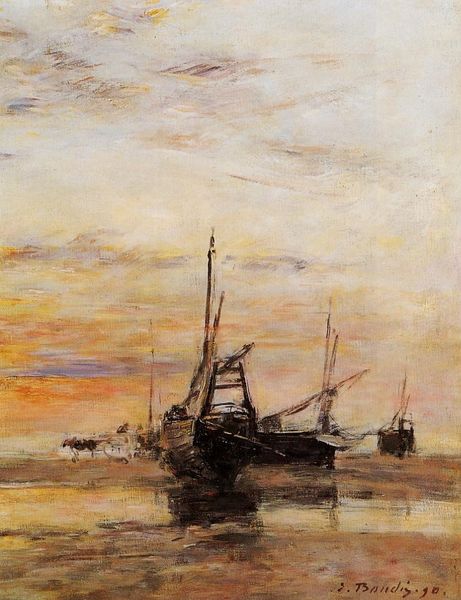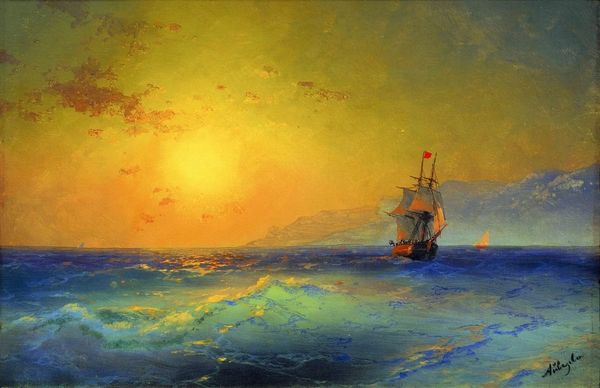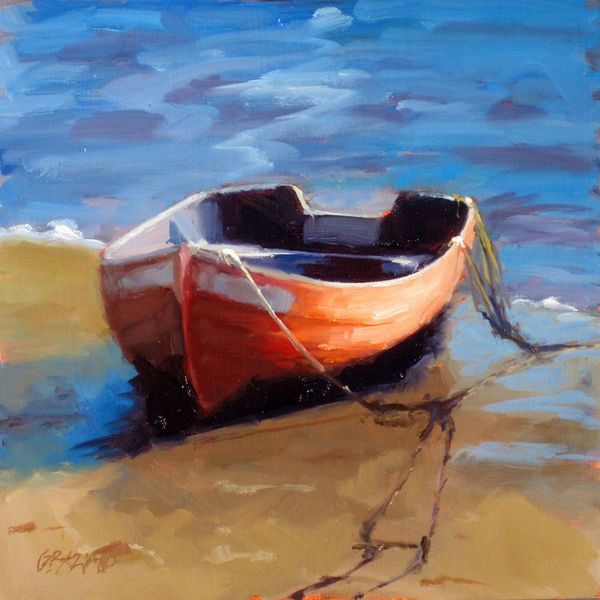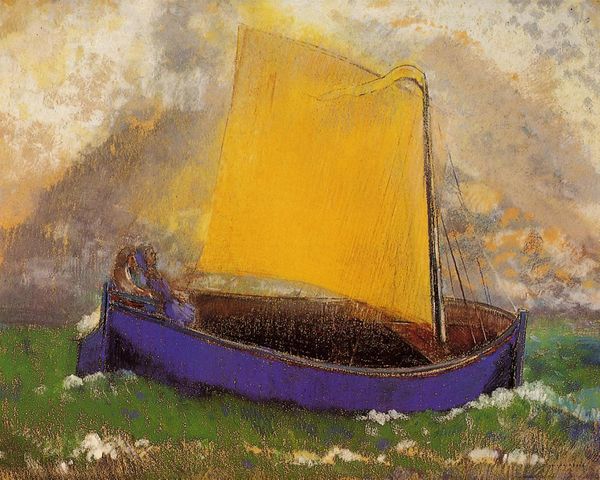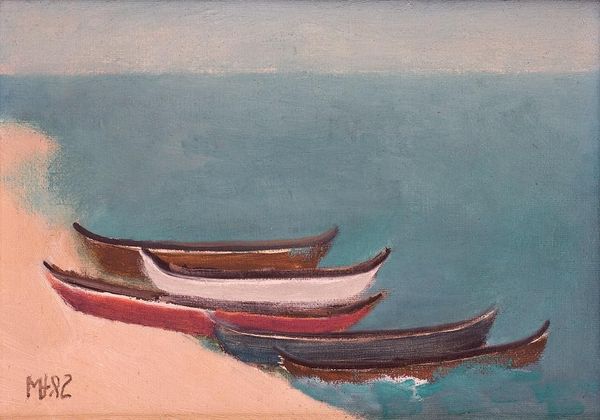
painting, oil-paint
#
boat
#
painting
#
oil-paint
#
landscape
#
oil painting
#
expressionism
#
water
#
symbolism
#
expressionist
Copyright: Public domain
Curator: We're looking at Odilon Redon’s "Yellow Boat" from 1910, a captivating oil on canvas held in a private collection. Editor: It's really quite turbulent, isn't it? The heavy brushstrokes give the impression of very choppy waters, a sense of unease in the scene, and the sail seems to be bending inward to avoid the wind. Curator: Indeed. Given Redon’s position within the Symbolist movement, it's crucial to consider the deeper social and historical currents that might inform this image. Boats, for instance, often represented journeys, escapes, or even the passage of the soul after death. In a period defined by intense industrial change and social upheaval, a lone vessel at sea speaks volumes. Editor: You know, I am less compelled to locate direct social or political critiques and find myself much more attuned to Redon’s masterful manipulation of color and form here. Note the way the earthy ochres of the boat and sky clash with the greenish-blue of the water, and that the bright, vertical, pink streaks on the sail, like some mark. This is quite striking as it brings balance, and enhances our attention to this crucial piece of the composition. It certainly embodies a semiotic understanding, each form a signifier waiting to be understood. Curator: I can certainly respect that, although, for me, detaching it from a reading within historical frameworks feels limiting. The tension, perhaps, comes from broader anxieties. Were his personal life mirroring the broader issues of this era? His anxieties might also speak to social struggles, political divides, and concerns about modernity itself. The boat as metaphor extends beyond formal considerations. Editor: Perhaps, but there is also a dream-like, subjective quality here. Redon's use of oil paint serves less to depict literal reality and more to evoke a subjective emotional experience; thus its forms are not so much signifiers than pure emanations of emotion, made sensible to our eyes. Curator: Right. By investigating his use of symbolism as a vessel for communicating the experience of living at the time, we reveal just how potent these supposedly individual perceptions become, especially for a group facing immense and destabilizing global transformations. Editor: Ultimately, whether we choose a purely aesthetic approach or prefer a more historicist point of view, it’s clear that “Yellow Boat” presents us with an unresolved, deeply affecting image of solitude. Curator: Yes, indeed. A solitude shaped by historical circumstances whether implicitly or explicitly felt by the artist.
Comments
No comments
Be the first to comment and join the conversation on the ultimate creative platform.
